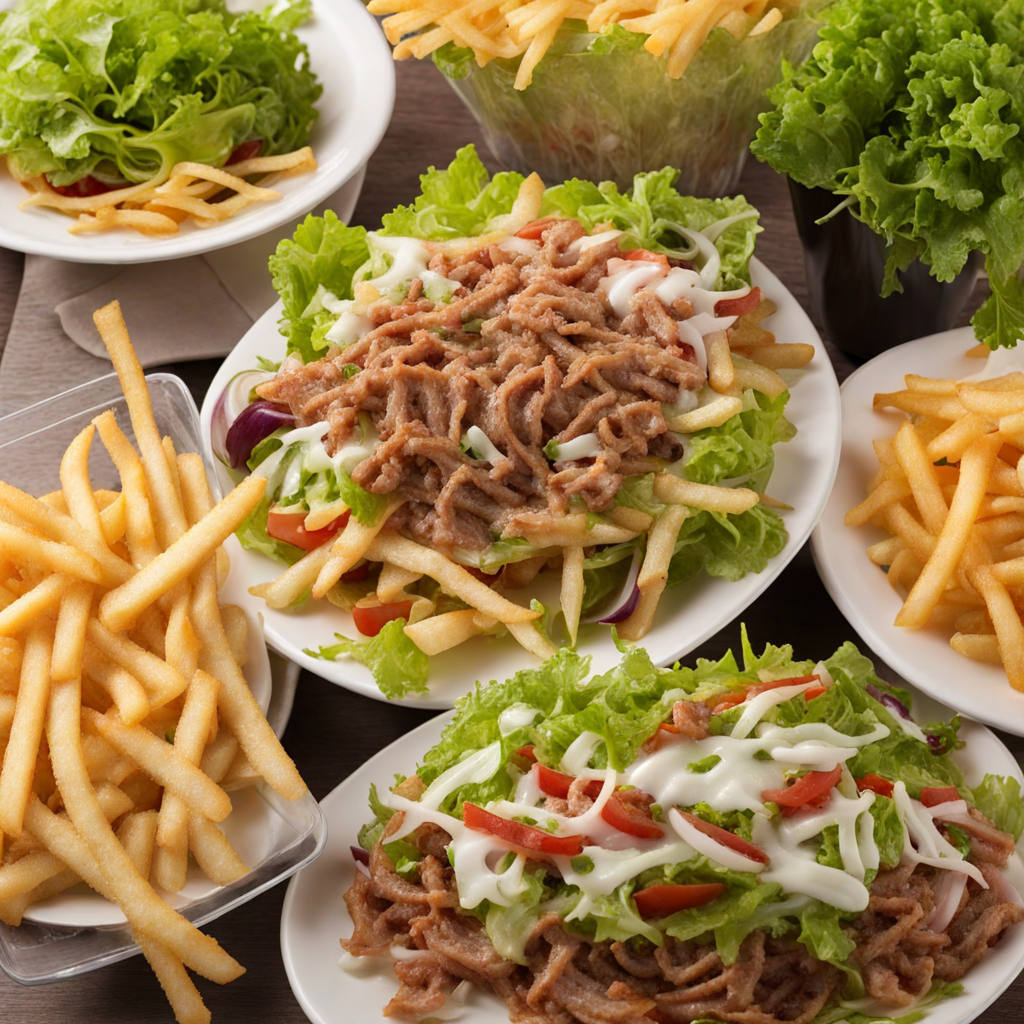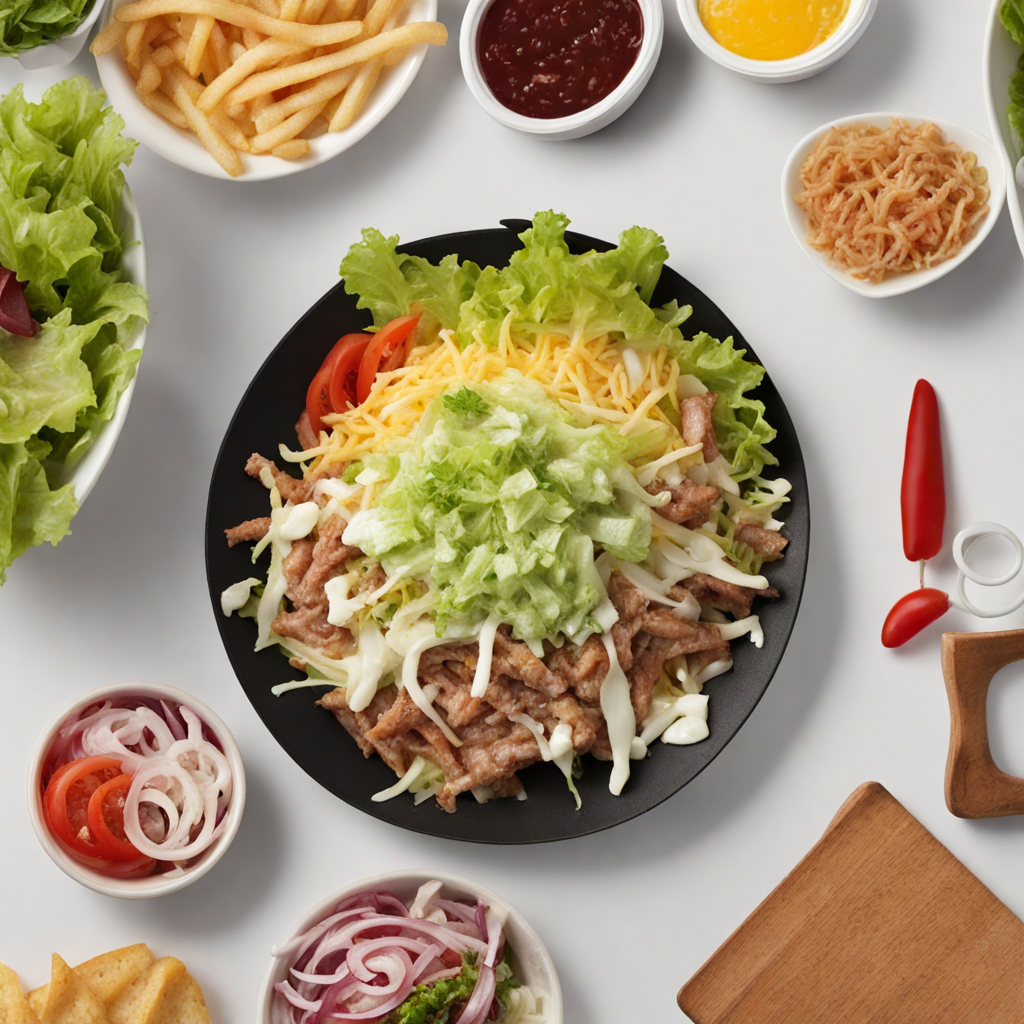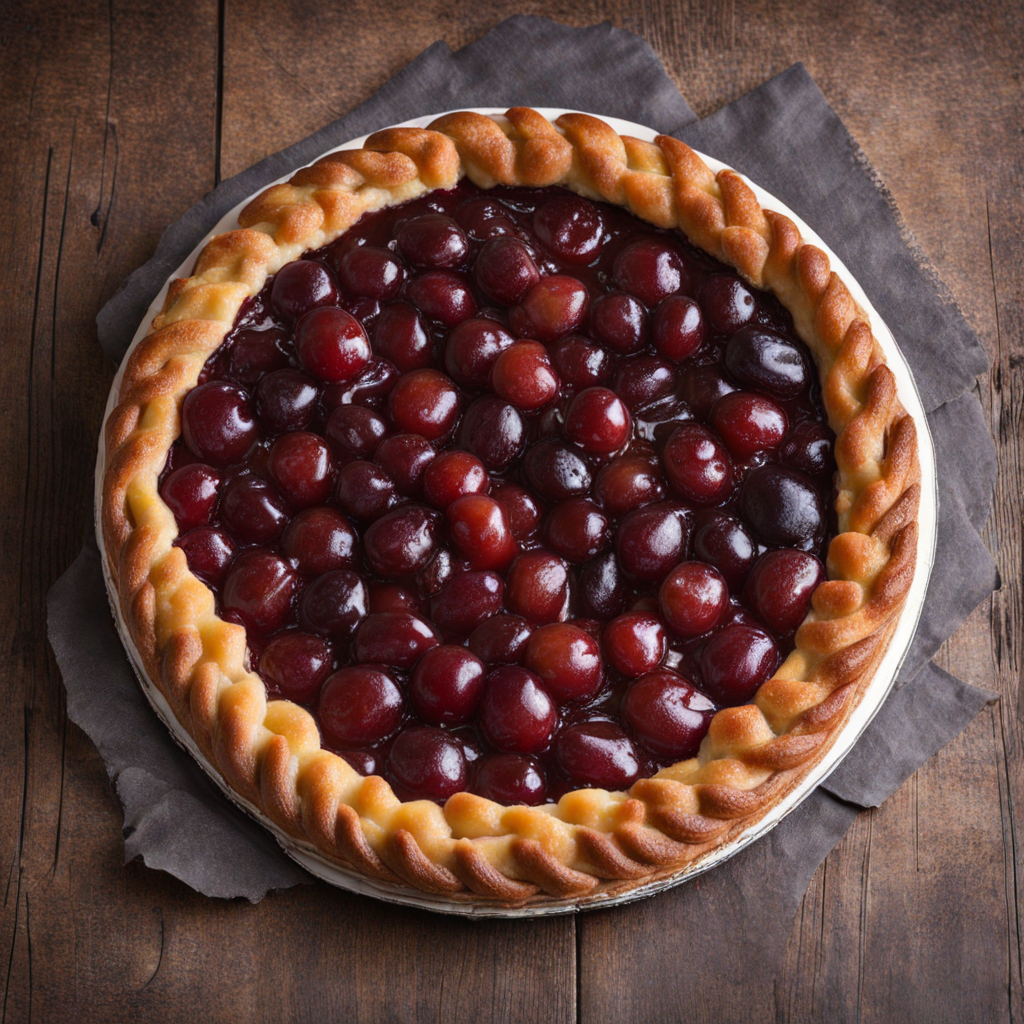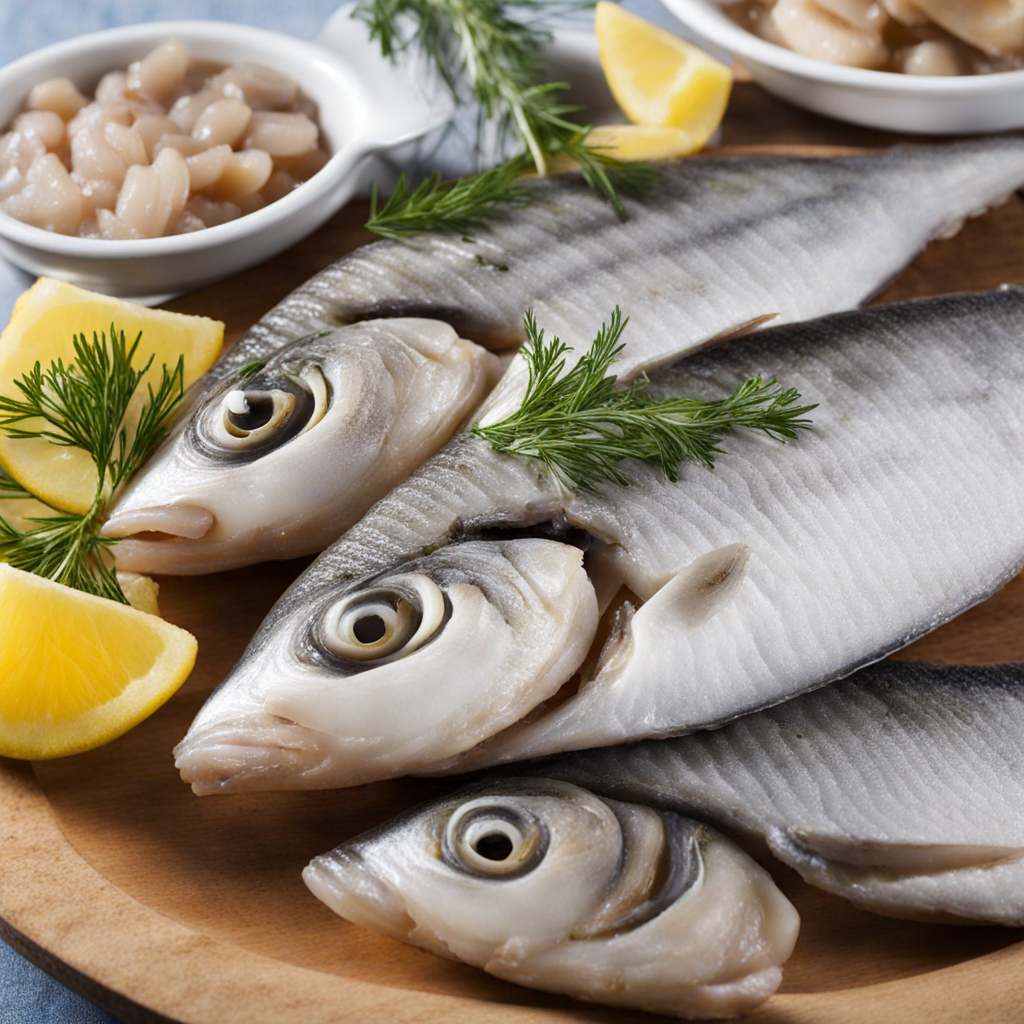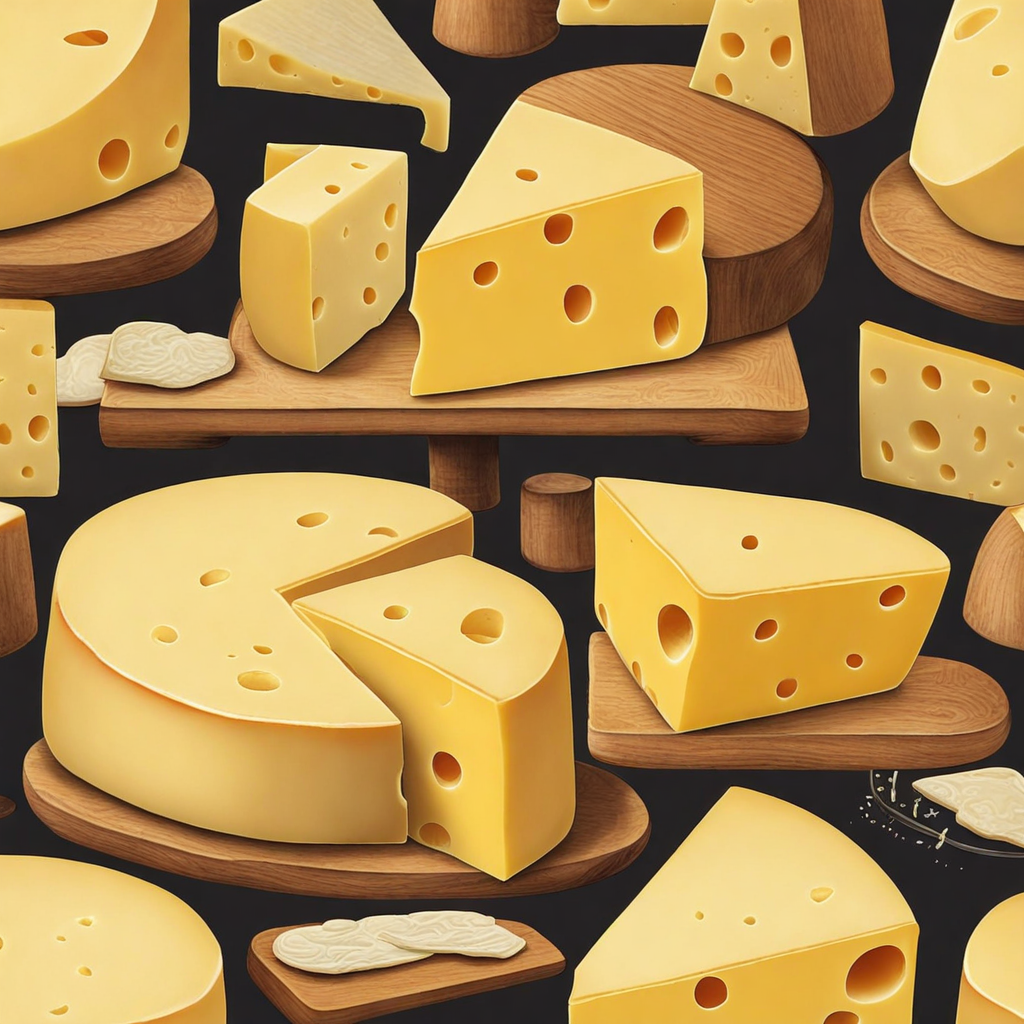Kapsalon
Kapsalon is a delightful Dutch fast food dish that beautifully combines a variety of flavors and textures, making it a true culinary adventure for anyone looking to explore new tastes. The base of Kapsalon consists of a generous serving of crispy French fries, which provide a satisfying crunch and serve as the foundation of the dish. Layered on top of the fries is a hearty portion of tender, marinated meat—typically shawarma or döner, which adds a savory and slightly spiced element to the meal. The combination of these two layers creates a comforting and filling base that is sure to please any appetite. To elevate the dish, Kapsalon is generously topped with a melty layer of cheese that is often grilled until bubbly and golden. This gooey cheese not only enhances the flavor but also adds a rich creaminess that complements the seasoned meat and crispy fries perfectly. Additionally, a fresh salad mix of lettuce, tomatoes, and cucumbers is often included, providing a refreshing crunch that balances the richness of the other ingredients. This combination of hot, cheesy goodness and fresh, crisp veggies creates a delightful contrast that keeps every bite exciting. To finish off this mouthwatering creation, Kapsalon is drizzled with an array of flavorful sauces, such as garlic sauce, hot sauce, or a tangy yogurt-based sauce. These condiments add an extra layer of depth to the dish, enhancing its flavor profile and allowing diners to customize their experience according to their taste preferences. With its satisfying combination of textures and flavors, Kapsalon is not just a meal; it’s a fun and indulgent journey that showcases the vibrant street food culture of the Netherlands.
How It Became This Dish
Kapsalon: A Culinary Journey Through the Netherlands #### Origins of Kapsalon Kapsalon, a beloved fast food dish from the Netherlands, is a delightful fusion of flavors and cultures that has captured the hearts and appetites of many. Its name, which translates to "barbershop" in Dutch, hints at its intriguing origins, tied to the vibrant multicultural neighborhoods of Rotterdam in the early 2000s. The creation of Kapsalon is often attributed to a local barber, whose late-night cravings led to an innovative culinary invention that has since gained widespread popularity across the country. The story goes that one evening, a barber named Kader Genc walked into a local shawarma shop after a long day of work. Seeking something hearty and satisfying, he requested a combination of fries, shawarma meat, and toppings. The shop owner, intrigued by the request, prepared a layered dish that included crispy fries at the bottom, topped with savory shawarma, a generous serving of melted cheese, and a finishing touch of fresh salad and garlic sauce. This culinary masterpiece was served in a takeout container, making it an ideal late-night snack for the city's nightlife. Kapsalon quickly became a hit among the local community. Its unique combination of flavors and textures—crispy fries, tender meat, and fresh toppings—offered a satisfying meal that was both filling and delicious. The dish's appeal was further enhanced by its affordability, making it a go-to option for those looking for a hearty meal on a budget. #### Cultural Significance Kapsalon represents more than just a meal; it embodies the multicultural essence of modern Dutch society. Its origins in a shawarma shop highlight the influence of Middle Eastern cuisine on the Netherlands, a country that has seen significant immigration over the decades. The dish reflects the culinary melting pot that characterizes contemporary Dutch food culture, where traditional Dutch fare meets flavors from around the world. As Kapsalon gained popularity, it became a symbol of the late-night food scene, particularly in urban areas where nightlife flourished. It is often enjoyed after an evening out, becoming a staple among young people and party-goers seeking a satisfying post-party indulgence. Kapsalon's rise in popularity also coincided with the increasing trend of fast-casual dining, where convenience and taste are paramount—attributes that Kapsalon embodies perfectly. Moreover, the dish has become a social phenomenon, often shared among friends as a communal meal. The act of indulging in a Kapsalon, with its generous portions and vibrant flavors, fosters a sense of camaraderie and celebration. Whether enjoyed at home, in a bustling café, or on the streets after a night out, Kapsalon is often associated with joyous moments of togetherness. #### Development Over Time Since its inception, Kapsalon has undergone various transformations, evolving to cater to changing tastes and dietary preferences. While the original version remains a firm favorite, the dish has adapted to incorporate diverse ingredients and variations. For instance, vegetarian and vegan alternatives have emerged, replacing the traditional shawarma with plant-based proteins while maintaining the beloved combination of fries, cheese, and sauces. As the dish gained traction beyond Rotterdam, it began to appear on menus across the Netherlands and even in neighboring countries. Food enthusiasts and chefs started to experiment with Kapsalon, introducing unique twists, such as spicy versions with added chilies or gourmet versions that feature artisanal ingredients. The adaptability of Kapsalon has solidified its status as a versatile dish that can be tailored to suit a wide array of palates. Social media has played a significant role in popularizing Kapsalon, with food lovers sharing their own takes on the dish through vibrant photos and videos. This digital visibility has led to a resurgence in interest and creativity around Kapsalon, inspiring competitions and food festivals dedicated to celebrating this iconic dish. Additionally, food trucks and pop-up eateries have further contributed to Kapsalon's visibility, offering innovative interpretations that draw in both locals and tourists. #### The Contemporary Kapsalon Experience In today's culinary landscape, Kapsalon has solidified itself as a cultural icon within the Netherlands. It is not uncommon to find Kapsalon featured in food festivals, culinary competitions, and even as a subject of playful debates among food lovers regarding the "best" version of the dish. Restaurants and food stalls now offer an array of Kapsalon options, each vying to put their own spin on this classic creation. Moreover, Kapsalon has transcended its humble origins and gained a place in popular culture. It has appeared in television shows, social media trends, and even cookbooks, further embedding itself into the fabric of Dutch food identity. The dish's rise to fame mirrors the evolution of the Netherlands itself—a nation that embraces diversity while celebrating its culinary heritage. #### Conclusion Kapsalon, with its rich history and cultural significance, tells a story of innovation, community, and the blending of flavors that reflects the essence of contemporary Dutch cuisine. It serves as a reminder of the vibrant multicultural landscape of the Netherlands, where traditional and modern influences come together in delightful and unexpected ways. From its humble beginnings in a Rotterdam barbershop to its status as a beloved fast-food phenomenon, Kapsalon continues to evolve, captivating new generations of food enthusiasts eager to indulge in this unique culinary creation. Whether enjoyed late at night after a night out, shared among friends, or savored as a quick meal on the go, Kapsalon remains a testament to the creativity and adaptability of food culture. As it continues to develop and inspire, there is no doubt that Kapsalon will hold a special place in the hearts—and stomachs—of many for years to come.
You may like
Discover local flavors from Netherlands


